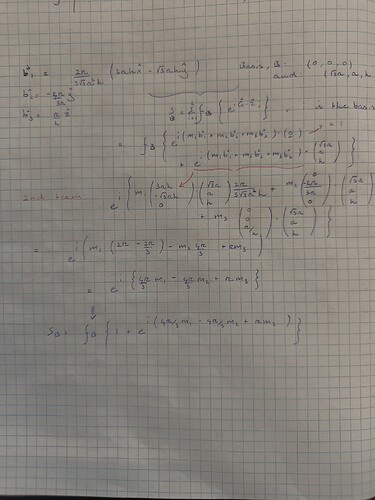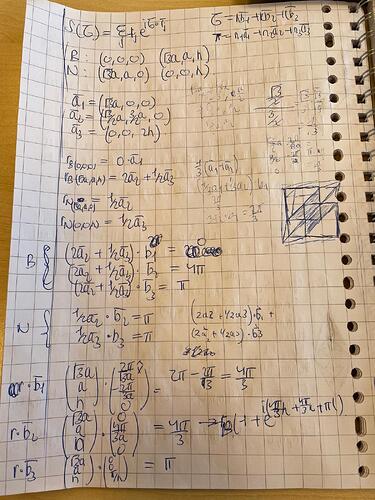Since the reciprocal lattice vectors b1 consists of both an x and y component I don’t understand how you get to the factors 4pi/3m1 and 4pi/3m2. Could someone explain how to get there?
This is correct. To add to this, there are two observations that help a lot:
- All the coefficients in the exponents of the structure factor are 2\pi times the basis coordinates expressed as a fraction of lattice vectors.
- In the honeycomb crystal structure the distance between the nearest neighbors is 1/3 \times |\mathbf{a}_1 + \mathbf{a}_2|.
These two observations help to arrive to the answer without an extended calculation.
Hi, if I try to do it as you described expressing the basis coordinates as a fraction of lattice vectors I get a different answer. Expressing a(sqrt(3),1,h) in lattice vectors is 2a_2 + 1/2a_3, but then it’s weird there is a m1 term. Also, I don’t see how the 1/3*(a_1 + a_2) helps here. Could you explain this?
It sounds like you made a mistake in the calculation, but without seeing the complete calculation I can’t identify its source. Please share the complete description of what you’ve done. It is likely that your identification of coordinates of the atoms in the basis is incorrect.
In the minitest 3 from 2019 the basis is not wrt the lattice vectors maybe that’s why the usual calculation doesn’t work? But why is that? In the minitest 3 from 2025 we did have a basis wrt the lattice vectors so that is a bit confusing.

